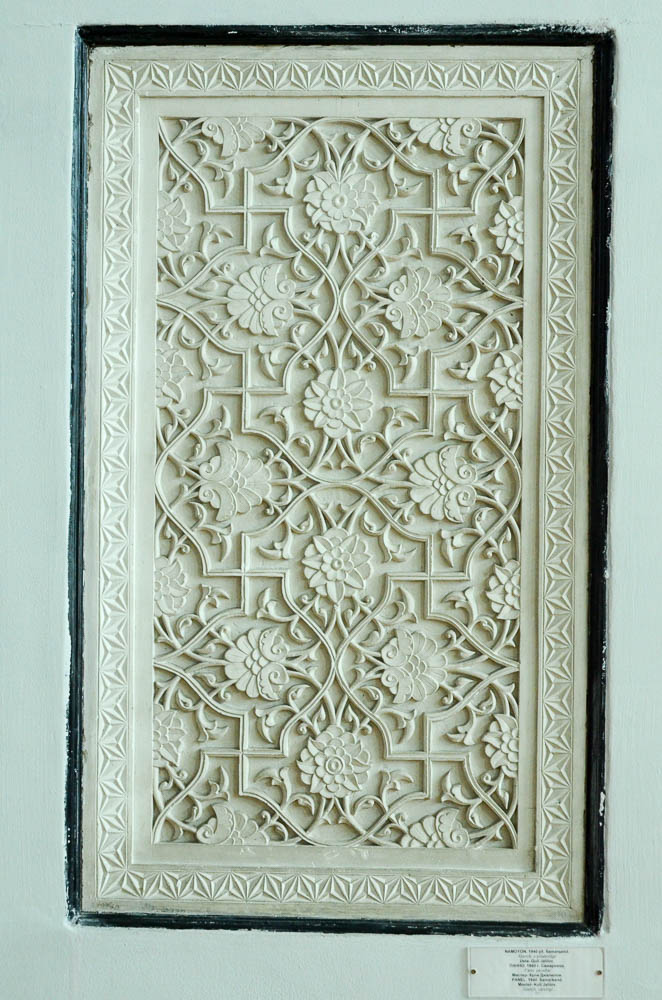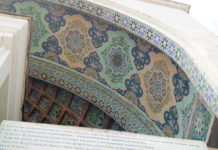Ganch (plaster) carving is one of the oldest forms of architectural and decorative art of Uzbekistan. In the twentieth century, main centers of ganch carving were Khiva, Bukhara, Tashkent, Samarkand, Andijan, Namangan and Kokand.
Ganch decorated palatial buildings, madrasas and mosques as well as homes of wealthy citizens. From late nineteenth and early twentieth centuries, one can see the dominance of lush ornamental motif on a smooth background, which found its completion in the art of Bukhara masters (ganchkors). They have created a specific type of carving called tabaka pardoz, which are ornamental motifs carved at a shallow depth on a smooth background. This involved the use of coloured ganch technique. The artistic effect is achieved through crisp patterns from coloured plaster.
There are several techniques involved. For relief carving, the surface of the walls, niches and arches are covered with ganch plaster, mixed with black, grey-silver or sandy-red colours. On top of that layer, white ganch is applied with patterns drawn on top of it. Then the pattern is carved and a white background layer is removed revealing the lower coloured background. Carving a smooth two-colour or multicolour plaster is done after the contours of the pattern are filled with a coloured background ganch leveling with the surface of the plaster.
By the mid twentieth century, the ganch tradition was almost lost. However, since the 1970s ganch carving is extensively used in the design of administrative buildings, cultural facilities, shops, cafes in Tashkent and other cities of Uzbekistan. By the 1990s, a strong school of ganchkors was formed in Tashkent, who have decorated the interiors of various buildings in the capital. Out of these buildings, it is worth mentioning the magnificent carved ganch panels of Turkestan palace, Nowruz wedding palace, the building of the Oliy Majlis (Parliament), Stock Market building, theaters of Tashkent, Tashkent subway stations and other buildings in Uzbekistan.
Currently ganch carving remains one of the leading forms of folk art and crafts of Uzbekistan and its significance in the design of architectural structures increases by the year. Moreover, the modern masters of ganch carving work on the decoration of interiors in foreign countries such as Kazakhstan, Tajikistan, Russia, Ukraine, Germany, France, Malaysia and other countries.





